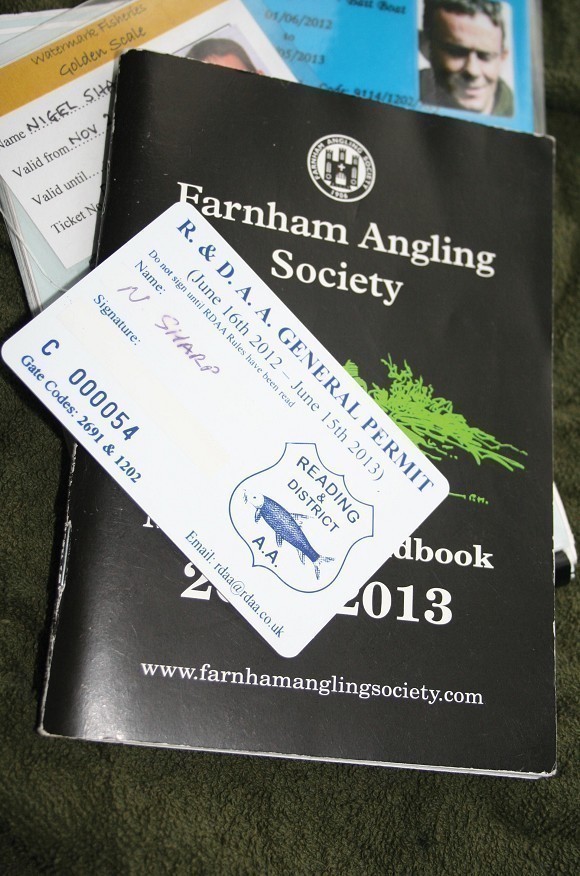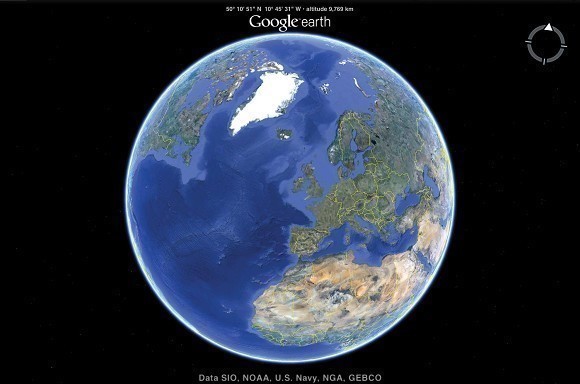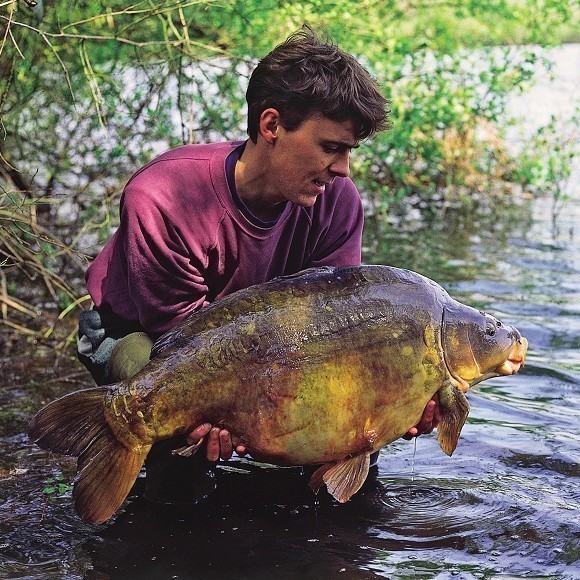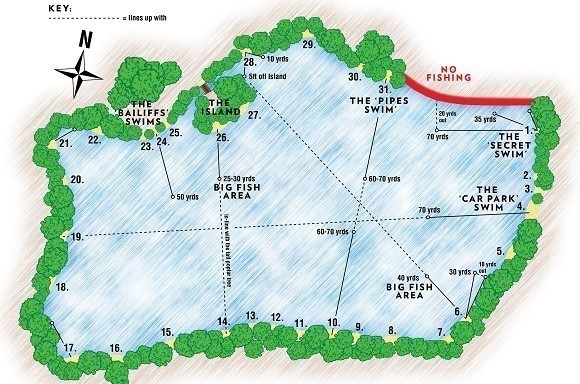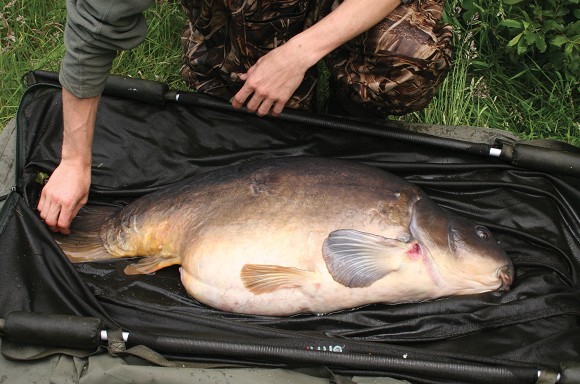
4 steps to catching a brute
Heather the Leather, The Burghfield Common, Shoulders. Nigel Sharp's catch book reads like that of the who's who of carp in carpdom. Here he explains how he goes about targeting just these brutes of the lake...
1 Picking the right venue
Sub categories: Distance to travel, time to watch the water, bait-up opportunities
To start off with, you’ve got to pick a venue which contains big fish. In this day and age there are plenty of lakes which contain big fish so it’s a case of picking one you want to go and fish.
For some anglers, they just want to catch a big fish or rack up a few big ‘uns so my advice would be to simply pick a water with a good head of big fish in it like Wellington or The Essex Manor. For me, I tend to let a certain fish pick the venue for me so therefore I could say picking the fish comes first. Anyway, once the fish and venue has been decided upon the first job is to find out about the availability of tickets. Most big fish and the lakes that contain them are very well-known so the controlling clubs or organisations are flooded out with applications from keen anglers, waiting lists are in place so finding out about tickets availability is the first port of call. Personally I don’t like to put my name down on long waiting lists as this says one thing to me and that’s ‘busy water’, so that’s my first no, no in picking a water regardless of distance from home.
Some lakes/waters are controlled by clubs that don’t cap the membership so you can get straight in on what are normally fairly cheap tickets. This can also mean that those waters will be busy but club tickets can be good back-up for when you’ve either caught a target fish or you’re waiting for another ticket to come up. Like I said, they can be cheaper than syndicate tickets so a good option if you’re counting the pennies.
Anyway, once you’ve decided on the fish/water to target and found out about the availability of tickets, the next stage is to start the research of the venue and if you’re not allowed through locked gates, the spy in the sky which is Google Earth comes into play. This site/app is incredibly awesome and the least it will do is show you the shape of the lake and which way it is facing (north, south etc). It’ll also give you its location which is another thing that’s well worth considering when picking a water. Luckily for me, since the day I arrived on this planet I’ve lived in an area where I can access the Blackwater, Loddon, Kennet and Colne valleys with not much more than a 20 mile drive in any direction to get to the waters along them. These valleys need no introduction when it comes to their big carp and being a local with above average enthusiasm, when I’ve fished these waters I’ve been able to stay regularly in touch with them and even bait up on some of the quieter ones. I know for a fact by doing this, it has played a major part in my success on what are reputed as some of the hardest of waters. Again, another thing well worth considering if you’ve got fire in your belly to catch a certain carp.
Basically, simple rules apply with this: if you’re local you can come and go regularly and bait up on a little and often basis. If you’re travelling long distances you’ve got to consider all things from time limits on waters to justifying fuel costs. Some waters only allow short stays so maybe they are not suitable for 6hr+ round trips. This again can be where a cheap club ticket is an edge if you want to stay in an area for several days and bounce from one water to another. Mind you, if you want it bad enough you’ll do it and having fished for some of the best fish that ever lived in our country, I’ve seen like-minded anglers that ‘want it’ bad enough to go through the pain barrier and do these things regardless of fuel costs, time on the water and the competition from other anglers and in doing so made local anglers look lazy. Like I said, if you ‘want it’, you’ll do it.
Slightly off the subject, if you are going to be fishing more than one water, do please take more than one net, sling/retaining device to avoid transmitting fish diseases from one water to another.
With all this taken into consideration, the next piece of research is the local area i.e. shops, fast foods etc. but that’ll be the easy bit now that we’ve all got the smartphones/tablets with apps like ‘Around Me’ etc.
2 Research
Sub categories: Past captures, going methods, feeding times
Now you’ve decided on a fish/lake you’d like to target and worked out if you can get a ticket, afford the petrol costs and bait regularly, it’s time for a bit more research.
For me, once I’ve decided on targeting a particular fish that’s the fish I’m interested in and I’m not overly bothered in what goes to bag up on the other residents in the lake. Basically all I want to know about is that fish so I start with taking a look at past captures. The first thing I want to know is what does it get caught on the most? Does it take a preference to boilies over particles or is it a maggot muncher? Also, what I consider is a very important question to ask and might sound very basic is “Will it take a floater?” The reason why I’ll want to know this is because floater fishing can be a very good way of singling out a big fish and can be a fast track way of catch the fish of my dreams.
Whilst on the ‘what bait theme’, I’ll also be wanting to know whether it tends to fall to small patches or large beds of bait? This will naturally lead on to the “does it come out on single hookbaits and if it does, what colour ones?” Again, the bait questions always include Zig Rigs and although considered a supposed ‘small fish’ method, many a big fish has fallen to Zigs so again an important question to ask; it’s definitely part of my big fish questionnaire.
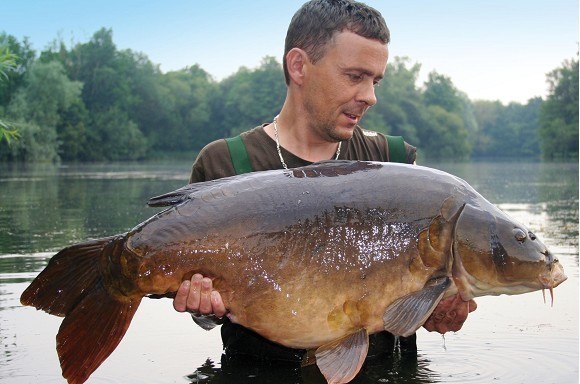 A big fish caught at dawn after putting the rods out the day before when the fish were basking in the weed
A big fish caught at dawn after putting the rods out the day before when the fish were basking in the weedAlthough the above are, in my opinion, all very important questions to ask, there is one other very important question and that is when bite time is and more importantly, what time does the big ‘un tend to get caught at? Yes, we’ve all heard of The Bazil Bells, Brute A’Clock etc., etc. and we could put this down to folklore but to me, this is very important because the last thing I want to be doing when said big ‘un isn’t chilling in the snags or basking in its favourite weedbed is casting about in the open water when he/she could be having breakfast, lunch, afternoon tea or supper. As they say, it’s all about being in the right place at the right time so I like to make sure I’ve got a sharp hook in the latter and in-depth research can only help me achieve this.
3. Looking for the correct areas
Sub categories: Not the obvious spots, known capture spots, getting an area going
By this stage of the journey to singling out a particular big ‘un I’ll be wanting to know which areas of the lake it frequents and at what times of the day it’ll be in those areas. The reason being is some of those areas are, like I mentioned earlier, simply just basking or chilling out areas. That said, some areas of a lake can also be known sulking spots of the big ‘un so they’re well worth knowing about to check on the fish after a capture or after a fish has been lost. Sometimes anglers (myself included) can be fooled in to targeting a big fish in the above areas because we keep finding our quarry there but really the most important areas or spots to know about are the ones the big ‘un has been caught from and again, like the bait and bite times thing, past captures can help tell us this. Basically it’s all very well fishing next to a weedbed or snag because the big ‘un is there every afternoon but really I want to know where he/she is having breakfast and at certain times of the year this might well change with the natural larders.
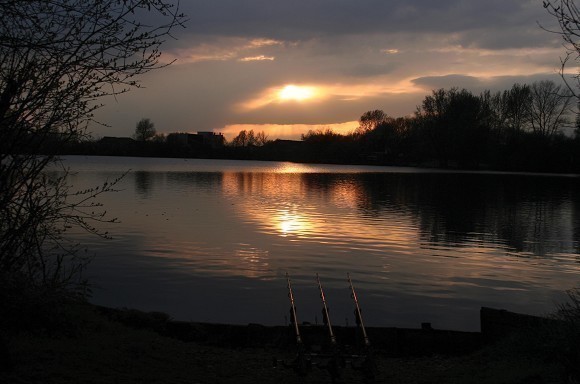 Historically the big ‘un doesn’t get caught on the end of this easterly so that’s why I sat on the back edge of it
Historically the big ‘un doesn’t get caught on the end of this easterly so that’s why I sat on the back edge of itI know on some lakes the fish become dependent on angler’s baits which makes them vulnerable to captures but I still want to know where the big feeds happen and where that big ‘un falls. For instance, on one lake I’ve been fishing over the last few years, the big girl tends to get caught from the main body of water. The other fish seem to get caught from all over the lake, so yes, I could go chasing them about but I initially bought my ticket because I wanted to catch the big ‘un. Some of the lads on the lake can’t work out why I’m not up in the bay chasing the smaller ones that have drifted in on the end of the fresh easterly wind. Believe me, I’d be up there if the big ‘un had history for coming out in those conditions but it doesn’t and I’m not chasing the shoal fish. No, I’ve not caught that fish yet but in my time on that water I’ve not seen it come from that weedy bay in those conditions so I rest my case.
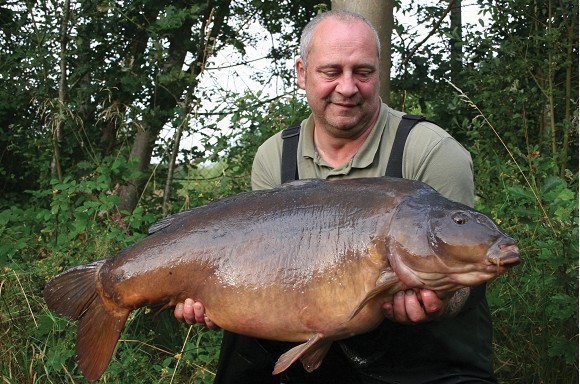 My mate Kel with a big ‘un I’m yet to catch, but I know exactly how he caught it so I’ve stored that info for a later date
My mate Kel with a big ‘un I’m yet to catch, but I know exactly how he caught it so I’ve stored that info for a later dateGetting back to the areas the fish gets caught from at certain times of year aspect, I like to know this so I can start planning ahead and if I do get that all important opening I’ll try and get things going in or close to that area prior to fishing it. With so many anglers about and information readily available on the internet, in mags and on the multi media, it’s hard in this day and age to gain such edges but it just makes me up my game. Take F1 for instance. Some people might think that the best drivers in the world should all race in the same cars to make it fair. Come on, they are all competing within split seconds of each other in different cars so therefore they are pretty much racing in the same cars anyway, but, and there is a big ‘BUT’, someone’s got to win that race or championship because they got a small edge or found something or a grey area that the other teams have missed, so if I can find an edge and be on the right side of that fine line between success and failure, likewise, I’ll make it my business to find it even if it does involve dangling a floater in the basking area if you know what I mean.
4. Ruling out areas of the lake
Sub categories: Like you do in the winter months
I think I pretty much covered this in the last section so I’ll try not to repeat myself. The reason why I like to find out the areas in which the big ‘un gets caught from, is so that I can rule out areas of the lake where it doesn’t and in doing so, focus my efforts in what effectively becomes a much smaller lake.
Take for instance the now famous Sandhurst venue. As I got to learn more and more about that lake it became apparent that Pegs 4, 9, 10 and the Pipes swim were good for a bite and Dave Benton proved this during two separate nights angling in January 2006 when he caught 30 odd carp from Peg 4. If my memory serves me well, most of what Dave caught were the smaller fish up to about 32lb but his mate Andy Thomas, during the same winter, didn’t catch as many fish but his were, on average, slightly bigger and topped by the then big ‘un, a fish called Cracker. When Andy caught Cracker she came from the other end of the lake where a deeper gully runs between the Right Hand Island and the Bailiffs swims. That area in time, although it does always hold fish, has proved to be a tad more difficult to get a bite from, but if you do it’ll more than likely be one of the larger residents, so if I was hell-bent on catching Scaley this winter that’s the area where I’d be targeting and in doing so I’d only be focusing on and fishing a third of the lake. That said, I know things do slightly change but that’s why we need to do the knowledge and gather as much information about our quarry and adapt if we want to succeed.
A sniper wouldn’t get dug in and wait for his target in an area where he doesn’t frequent would he so neither would I. Again, it’s all about taking it to another level and some anglers just don’t want to go fishing for that and some like me do.





